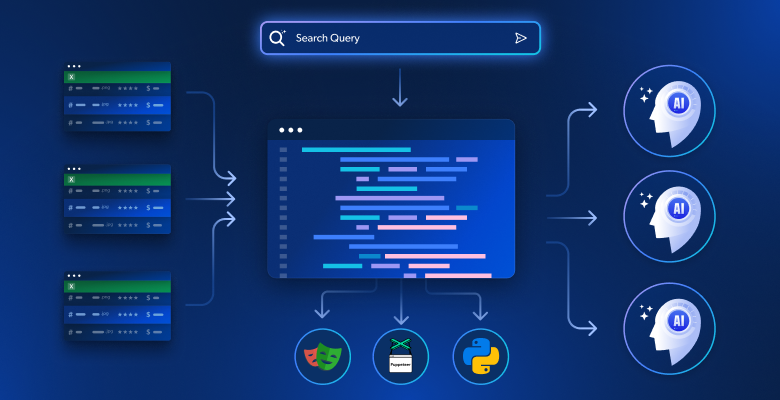In this article we will discuss:
- What is a Data Flywheel?
- Data collection – the base for a successful Data Flywheel
- Data Flywheel can help with the development and marketing of new products
- Maintaining a successful Data Flywheel can improve (Return on Investment) ROI
What is a Data Flywheel?
A data flywheel increases the momentum of a product or process at an accelerated rate through the strategic use of data. A flywheel builds up energy as it rotates to the point where it becomes self-sufficient. It uses information to create a virtuous cycle where more data leads to faster learning curves, better products, and higher customer acquisition/retention. An effective data flywheel strategy sparks new product innovations, increased revenues, and drives profits higher.

A classic example of a data flywheel is Netflix’s algorithm-powered recommendation feature. When they first rolled this feature out, Netflix would recommend the most popular videos. As time went on, Netflix gathered user viewing and rating data points, feeding these into a ‘recommendation engine’. This in turn drives more personalized ‘recommended for you’ suggestions for each individual user, which in turn supports increased viewership.
Netflix users now watch over 200 million hours of content a day.
The more data you are able to collect about a product, business/consumer process, or competitor, the more you can drive growth. Like a flywheel, it starts slow, gradually accelerating. The flywheel concept was pioneered by Jim Collins in his book Good to Great: Why Some Companies Make the Leap… and Others Don’t. His most famous success story was how he pitched the concept to Jeff Bezos in 2003, ultimately becoming a key part of Amazon’s customer-centric philosophy.
Data Collection – The Base for a Successful Data Flywheel
Data collection on a large scale serves as the foundation of a data flywheel strategy. Data is the fuel that drives the flywheel engine. While there are many ways to gather data from proprietary websites and applications, gathering data from external sources like websites can be challenging. For example, marketeers at eCommerce companies would want to gain access to Sell-Through Rate (STR) data of lookalike products on competing marketplaces. They would be able to benefit from data points such as:
- Seller ratings, and reviews
- Dynamic pricing
- Product images, titles, and categories
- Marketplace search engine results
- Special offers
Unfortunately, many websites put barriers in place to complicate data collection by competing entities. Things like CAPTCHAs, server restrictions based on geolocation, and request volume/rate limits can often lead to your IP address being blacklisted, blocked, or served false information. You could write your own Python scripts in order to collect data, but this is a labor-intensive endeavor and could lead to your account being suspended for ‘suspicious activity’ in certain instances. You could also hire DevOps, Data Experts, IT personnel and developers to develop and maintain systems for operational data collection activities but this is a very costly solution that is hard to scale (up or down).
What companies really need is an automated, agile, and financially viable solution that can streamline the collection of web data. Such a solution should operate on a global scale and be able to access any open-source website. It should leverage its technological prowess to circumvent website blockades using sophisticated retry logic. Any tool/service should also comply with industry-leading ethical usage guidelines to ensure that the data collected will maintain its long-term business value. Additionally, businesses will want to receive data that has already been structured, cleaned, synthesized and formatted in such a way that it can be imported and used immediately by teams and systems alike.
Data Flywheel to Enhance Product Development and Marketing
Amazon is a leader in using the data flywheel strategy to develop and market new products. Amazon’s Prime membership is a good example. Amazon Prime’s low prices attract lots of customers. Many clients are able to clearly see the value proposition, such as same day or next day shipping options. Prime, however, is used by Amazon as an initial touch point for cross/upsells; members are exposed to many other services such as Prime Video, Amazon Music, Audible, Amazon Pantry, etc., driving further sales and subscriptions. Amazon uses data collected on customer preferences, and trends from one service in order to inform marketing tactics on the up-sell. For example, customers that buy children’s toys may be interested in subscribing to Amazon Prime for its junior content.
Another example is Quby, a Dutch-based tech company that offers home-based technologies focused on reducing energy waste. Quby used a data flywheel strategy to significantly expand its market and success.
Quby started by offering an in-home display and smart thermostat sold by utility companies across Europe. These products are able to keep track of fine-tuned energy usage. They utilized this information in the context of data training algorithms to be able to detect in-home appliance usage. In 2017 Quby launched its first AI-powered service, ‘Waste Checker’. They were able to detect inefficient usage of appliances, ranging from the washing machines and dishwasher to central heating systems, and showers. Once wasteful behavior was detected, Quby offered personalized advice on which actions could be taken in order to reduce energy waste. Qubys’ smart thermostats capture and analyze data on a second-by-second basis. They were able to leverage this data they collected in order to launch a newly revised energy bill breakdown, helping reduce client-side costs, carbon footprint, and energy waste.
A third example is Reddico, a digital marketing agency that provides industry-leading search marketing services to businesses across the UK. A key challenge for Search Engine Optimization (SEO) firms is providing their clients with insights on a global basis. Collecting data on search results in multiple geographies is complex and time consuming. Reddico was able to offer a new highly competitive service with laser-focused geo targeting by partnering with a data collection network. This partner provided them the ability to route traffic using peer devices in target GEOs enabling customers to optimize, and localize campaigns based on actual client-side search results.
Enhancing ROI with a Successful Data Flywheel
A data flywheel can improve marketing ROI in three ways:
First, an effective data flywheel can grow revenues by providing data to continually improve products and services which in turn can lead to generating more customers. This is known as a ‘virtuous cycle’: more data, faster learning, better products, more customers. Rinse, repeat.
Second, an effective data flywheel strategy leads to lower Customer Acquisition Costs (CAC). As the product is consistently improved based on user reviews, and product interaction data. A point can be attained in which the product-market-fit is such that it reduces friction, as well as customer acquisition costs thereby improving ROI. In the software market, Product-Led Growth (PLG) companies like Dropbox, Slack, and Calendy exemplify how a data flywheel strategy can lower CAC.
Third, when properly implemented, a data flywheel strategy can mitigate the risks associated with regulatory compliance for web data collection on a large scale. Data collection for commercial use is subject to regulatory oversight such as is the case with the EU’s General Data Protection Regulation (GDPR) and the California Consumer Privacy Act (CCPA). If your company, or subcontractors violate any of these regulations, you could face substantial fines, and compromise the value of your data-driven products, and services.
Final words
Data flywheels are an effective strategy for driving both growth, and revenue. They enable a virtuous cycle of learning, improved products, and higher customer conversions/retention rates. Like a flywheel, the data-driven learning process keeps accelerating, using this inertia to help systems evolve more independently.
Flywheels are dependent on data. Collecting data from external websites like Amazon, LinkedIn, and Google at scale is challenging. Effective web data collection solutions must circumvent these challenges in an ethical and regulatory-compliant manner. Contact us today to find the perfect data solution for your business.





